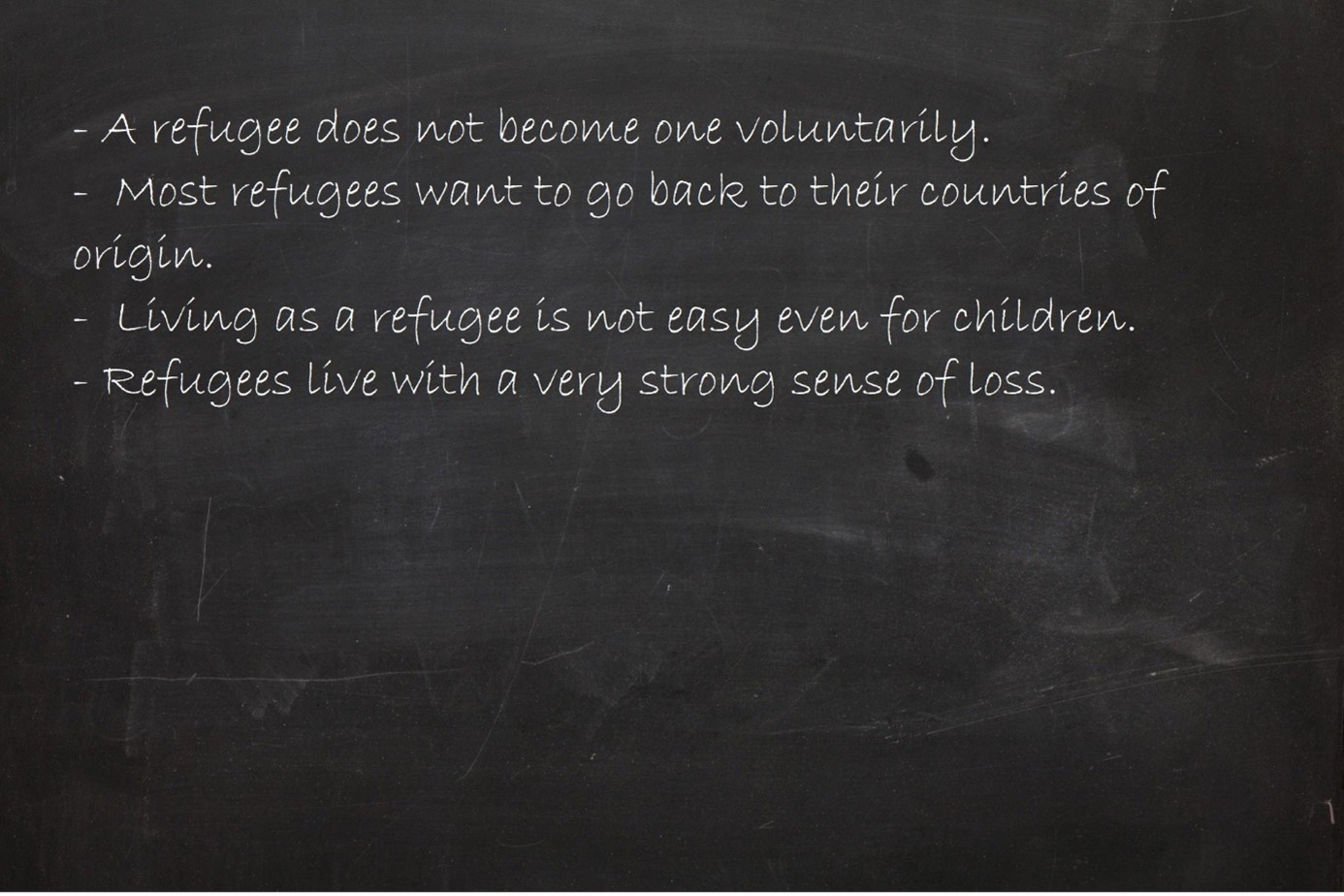
Exercise 1: Being a refugee
Time: 30 min
Teaching methods: discussion, individual work, work in pairs
The goal of the exercise:
- to make pupils understand the relevant refugee definitions
- to make pupils understand that refugees are ordinary people like them, who usually have lost everything
- to help pupils understand refugee’s situation and reasons that force refugees to leave their homes
Task 1
Time: 15 min
The goal of the task: to make pupils understand the relevant refugee definitions
Instruction for teacher: Give each pupil a copy of the Worksheet5.1 (see the file below). Ask pupils to work on their own and then work in pairs to compare their answers. Check answers together. You can also use the exercises from the Worksheet from this page below.
Task 2
Time: 15 min
The goal of the task: to make pupils reflect upon refugee’s past and present life, their situation, feelings and reasons for fleeing their country of origin
Instruction for teacher: Ask your pupils to read “Letters of frustration and hope from Syrian refugee children now in Europe. Four young people’s stories, in their own words”. The article Letters of frustration and hope from Syrian refugee children… consists of four different letters written by children and teenagers, who have a unique way of expressing the pain they suffered and the events they witnessed. Through their stories, pupils can start getting an idea of the reasons that force refugees to leave their homes.
After reading the article, you can invite pupils to reflect on the key messages that one can draw from it. You can use following questions:
- How does the Letters of frustration and hope from Syrian refugee children relate to the learning in this topic? / What is the significance of these stories for our lesson?
- How did the story make you feel? / What are some of the aspects of these stories that caught your attention?
- What problems do children face after arriving in a new country?
You can write key conclusions on the board.
Example:



